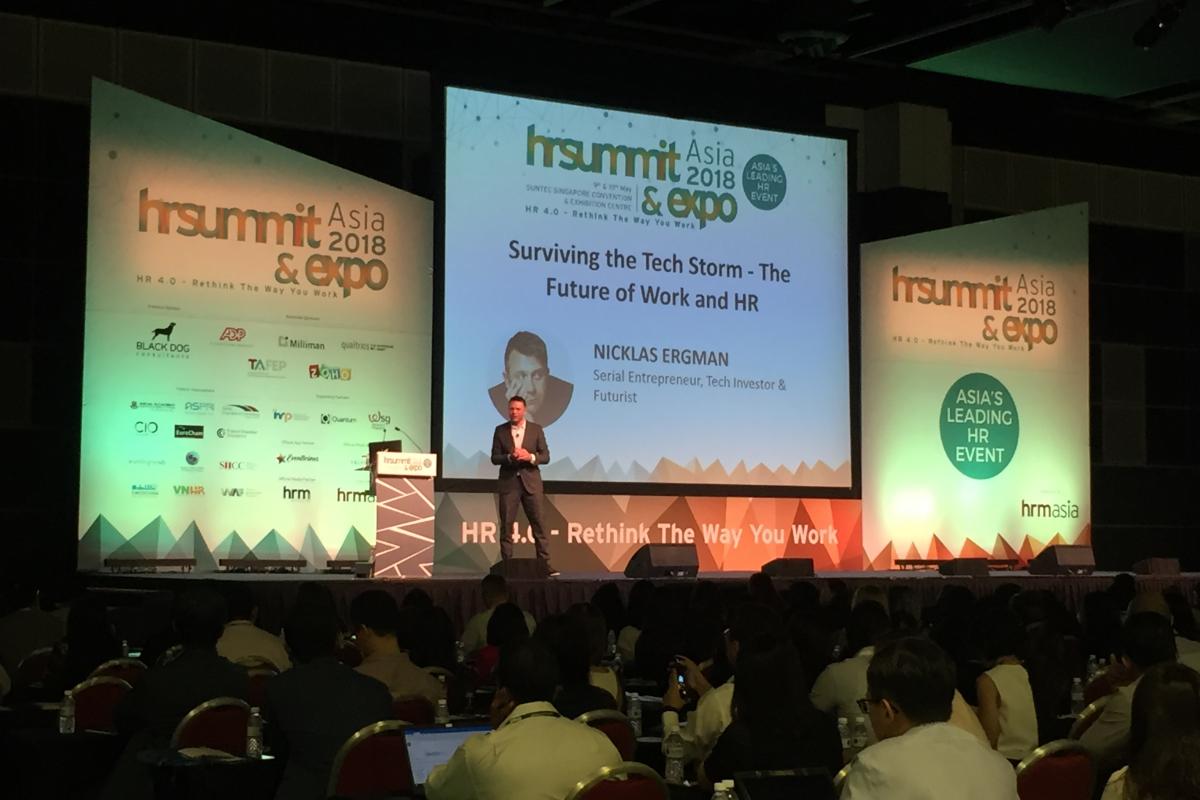HR Summit 2018: Five key takeaways from Day One

1. Creating collaborative workspaces
In an exclusive joint presentation, Eileen Oh, Associate Director, People Services from Changi Airport Group, Dr. Andrew Epaphroditus, Director Health & Productivity from GSK and Bhawna Gandhi, Head of HR from Danone, talked about how their respective organisations took on the task of creating collaborative workspaces. Two common threads emerged: health, and employee participation.
Epraphroditus spoke about how GSK Asia House was built with the intent of health in mind. For instance, every corner of the office receives natural light, and a surplus of indoor plants not only add a green touch, but also reduce sounds pollution – a common issue in collaborative workspaces.
Both Changi Airport Group and Danone roped employees into the process of designing their new workspaces. As Gandhi noted, “When you build a house, and are involved in choosing every single thing, you become very proud of it, and invested in it.”
2. Surviving the tech storm
AI, augmented reality, blockchain, natural interfaces, and automation are set to become big players in how the world functions. In this future, social interaction, empathy, and risk-taking will become more important than ever, said futurist and tech investor/entrepreneur Nicklas Bergman.
A piece of advice Bergman has for HR professionals and business leaders contemplating how to cope with the oncoming ‘tech storm’ is “Be curious. Understand how these things can improve your organisation, and embrace them.”
He added that timing, assessment, and adaptation would be essential to the ‘how’ of introducing new, interesting things to an organisation.
3. Experience versus potential in recruitment
Michael Ferrario, co-founder and CEO as StashAway – also previously the Group CEO of Zalora – suggested that instead of just thinking about potential versus experience, organisations could consider the idea of hiring the candidates of tomorrow today.
A candidate who doesn’t currently have the right experience might just do in five, 10 years – with help from the company to keep growing, take on more responsibilities, exposure, and responsibilities.
4. Keeping tenured talent up-to-speed
During a panel session in the Develop & Perform stream round “talent 4.0”, Stephanie Nash, Chief People Officer at Redmart, talked about prioritising a growth mind-set at all levels.
“One of the things we’ve instilled, that’s underpinned by our culture, is valuing continuous learning. People that we’ve recruited into the organisation at the executive level and throughout – we’ve really looked for that growth mindset, and an focus on continuous learning. We embed ways of ensuring that they’re being curious,” she said.
5. Four critical levers of effective transformation
Leslie Martin, HR Transformation lead at Kelloggs Asia-Pacific, emphasised the importance of having an action plan when driving change throughout any organisation or business unit.
On this front, she says there are four key elements that have to be in place in order for change to be successful.
- Understanding that transformation is a shared agenda
- Capability should be embedded in all employees
- Unleash the special forces within your organisation (“You need to communicate and have internal champions”)
- Establishing a system of governance
HR Summit & Expo Asia 2018 took place at Suntec Singapore Convention and Exhibition Centre on May 9 and 10.
Check out our coverage below:
- How to create a culture of risk-taking
In a time of evolve-or-die, organisations need to empower employees towards making a change and trying new things. - Gardens by the Bay’s small but powerful workforce
The region’s largest curator of plants has a much smaller workforce than commonly thought. - Lynda Gratton on the future of work
Here are five of Professor Lynda Gratton’s most memorable quotes about artificial intelligence from day one. - Five takeaways from Day One
Session one of this year’s Summit was packed with learnings, case studies and best practices. Here are our top picks. - How Google simplified its hiring process
The internet pioneer went from 20 rounds of job interviews to just four. - Facebook’s values-driven culture
Through all its ups and downs, Facebook’s corporate values is the one thing that has kept it on the right path. - When HP absolished performance ratings
Not even the company’s Regional Head of HR expected what happened next. - Five things we learned on Day Two
Key takeaways from Day Two of this year’s Summit.



